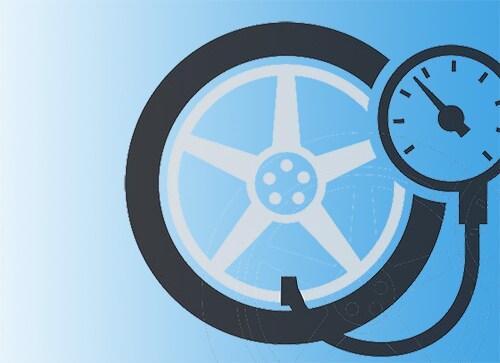
Keeping your tires at optimal air pressure is one of the best ways to ensure everything else goes smoothly while you're driving. When properly inflated, your tires will last longer, grip the road better, and even improve your fuel economy.
Many new Hyundai, Subaru, and Volvo vehicles are available with a Tire Pressure Monitoring System that will alert you of any irregularities, and your car might have a similar system. If it doesn't, an indication of the proper level of inflation can still be found in your vehicle's owner's manual or on an information sticker on the driver's side doorjamb.
To check your tire pressure manually, follow these steps:
1. Locate your tire's valve stem and fit a
pressure gauge over it.

2. The gauge will extend out. The last number visible is the PSI of your tire.
3. Compare your tire's PSI with the
recommended PSI for your vehicle.
4. If those numbers match, you're all squared away. If not, add or release air until you reach the correct pressure level.
5. Repeat for the rest of your tires.
Don't forget to check your spare tire as well. You don't want to pull out your spare if you have a flat only to find it's deflated, too.
With this helpful process, you can ensure that your vehicle stays road-ready. For when you do have a flat tire, need a rotation, or are not certain if your tire is in need of repair or replacement, we welcome you to any of the Parkway of Wilmington dealerships.
Make an Inquiry
* Indicates a required field
Contact
Hours
- Monday 9:00AM - 7:00PM
- Tuesday 9:00AM - 7:00PM
- Wednesday 9:00AM - 7:00PM
- Thursday 9:00AM - 7:00PM
- Friday 9:00AM - 7:00PM
- Saturday 9:00AM - 6:00PM
- Sunday Closed
